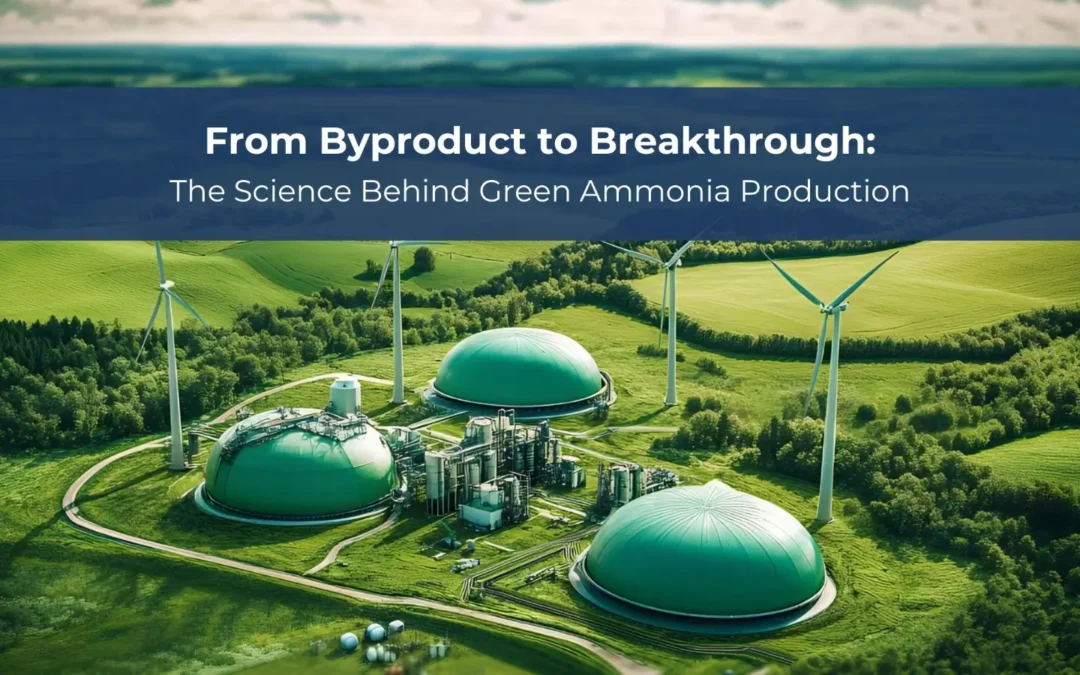Ammonia plants play a crucial role in various industries, serving as the foundation for producing fertilizers, pharmaceuticals, and even explosives. The journey of an ammonia plant, from its initial blueprint to becoming a fully functional reality, is a complex and fascinating process that requires meticulous planning, design expertise, and efficient execution.
Understanding the Basics of an Ammonia Plant
An ammonia plant is a large-scale industrial facility that produces ammonia gas by combining nitrogen and hydrogen. This simple chemical reaction, known as the Haber-Bosch process, occurs under high temperature and pressure within specially designed reactors. The resulting ammonia gas is then converted into various products through additional chemical processes.
Ammonia has wide-ranging applications in multiple industries. It is primarily utilized in the production of fertilizers, helping to nourish crops and increase agricultural yields. Additionally, ammonia is a critical component in the manufacturing of cleaning products, pharmaceuticals, and polymers.
The Role of Ammonia in Various Industries
The agricultural sector heavily relies on ammonia-based fertilizers to enhance soil fertility and improve crop yields. By providing essential nutrients, such as nitrogen, ammonia-based fertilizers support the growth and development of plants, ultimately contributing to increased food production.
Beyond agriculture, ammonia is also a key ingredient in the pharmaceutical industry. It serves as a building block for various drugs, including antibiotics and antihistamines. Moreover, ammonia-based compounds are employed in the synthesis of dyes, plastics, and explosives, further highlighting the versatility and significance of this chemical compound in different sectors.
Key Components of an Ammonia Plant
An ammonia plant is a complex ensemble of interconnected components working together to ensure the smooth production of ammonia gas. Some crucial components include:
- Reactor: The reactor is the heart of the ammonia plant, where the nitrogen and hydrogen react to form ammonia gas. Typically, multiple reactors are employed to maximize production efficiency.
- Compressors: Compressors are utilized to increase the pressure of the reactant gases, facilitating their conversion into ammonia.
- Coolers: Coolers play a vital role in the ammonia production process by removing excess heat generated during the chemical reaction.
- Separators: Separators aid in the purification and separation of ammonia gas from other byproducts and impurities.
Another essential component of an ammonia plant is the synthesis gas generator. This generator produces the necessary hydrogen gas by reacting natural gas with steam. The hydrogen gas is then combined with nitrogen gas, obtained from the air, in the reactor to form ammonia.
In addition to the main components, an ammonia plant also requires an extensive network of pipes and valves to transport and control the flow of reactant gases, intermediates, and final products throughout the facility. This intricate system ensures the efficient operation of the plant and minimizes any potential leaks or losses.
Furthermore, to maintain the optimal conditions for the chemical reaction, an ammonia plant requires a reliable source of energy. This energy is typically provided by large-scale power plants or natural gas-fired boilers, which generate the necessary heat and electricity for the plant’s operations.
Overall, an ammonia plant is a complex and sophisticated facility that combines chemistry, engineering, and meticulous control to produce ammonia gas, a vital compound with diverse applications in various industries.
The Blueprint: Planning and Designing an Ammonia Plant
Before the construction of an ammonia plant can commence, meticulous planning and careful consideration go into the blueprint creation. Several essential factors need to be addressed during this phase, ensuring the plant’s efficiency, safety, and compatibility with the selected site.
One crucial aspect that is often overlooked is the consideration of future expansion. While the initial design focuses on the current production capacity, engineers also need to account for potential growth and scalability. This foresight allows for seamless integration of additional units or equipment in the future, minimizing downtime and maximizing efficiency.
Importance of Site Selection
Choosing the right location for an ammonia plant is crucial. Factors such as availability of raw materials, transportation infrastructure, and access to skilled labor greatly influence the site selection process. Additionally, proximity to the target markets and compliance with environmental regulations are also key considerations.
Moreover, geological surveys play a vital role in site selection. Conducting thorough assessments of the soil composition, seismic activity, and groundwater levels helps engineers determine the plant’s foundation requirements and potential risks. This detailed analysis ensures that the chosen site can support the heavy infrastructure of an ammonia plant and withstand environmental challenges.
Designing for Efficiency and Safety
Efficient design is paramount to optimize the ammonia plant’s performance. Engineers and designers employ advanced software and simulations to create a layout that maximizes production capacity while minimizing energy consumption and environmental impact.
Safety is a top priority throughout the design phase. Advanced safety systems, including emergency shut-off valves, pressure relief systems, and monitoring instruments, are integrated into the blueprint to mitigate risks associated with handling hazardous substances and ensure the well-being of plant personnel.
Furthermore, ergonomic considerations are also taken into account during the design process. Creating a layout that promotes efficient workflow and minimizes physical strain on workers can enhance productivity and reduce the likelihood of workplace injuries. Factors such as equipment placement, access to control panels, and ergonomic workstation design are carefully evaluated to create a safe and comfortable working environment for plant operators.
The Construction Phase: Bringing the Blueprint to Life
Once the blueprint is finalized, construction work begins, transforming the planned design into a physical reality. However, the construction phase of an ammonia plant is not without its challenges.
Embarking on the construction phase of an ammonia plant is akin to orchestrating a symphony of engineering precision and logistical coordination. Every step taken in this phase is crucial in bringing the blueprint to life and ensuring the successful operation of the plant in the future.
Overcoming Construction Challenges
Constructing an ammonia plant requires specialized engineering expertise and careful coordination among various contractors and sub-contractors. Challenges such as tight project schedules, ensuring adherence to safety standards, and managing unforeseen site conditions demand meticulous planning and effective project management.
Furthermore, the construction phase involves a delicate dance of synchronizing the delivery of materials, equipment, and workforce to the site. Coordinating these elements seamlessly is vital to avoid delays and maintain the project timeline, underscoring the importance of efficient logistics management in the construction process.
Moreover, the complexity of integrating different components and equipment within the limited space of the plant site adds another layer of intricacy to the construction process. Each piece of the puzzle must fit together with precision to ensure the seamless operation of the ammonia plant once it is operational.
Ensuring Compliance with Environmental Regulations
Environmental regulations play a crucial role in the construction of an ammonia plant. Compliance with emissions standards, waste management protocols, and sustainable practices are essential to minimize environmental impact. Additionally, steps are taken to prevent accidental releases of ammonia gas, ensuring protection for both the environment and nearby communities.
Implementing environmentally conscious practices during the construction phase not only demonstrates a commitment to sustainability but also safeguards the surrounding ecosystem. From utilizing eco-friendly construction materials to implementing erosion control measures, every effort is made to uphold environmental regulations and mitigate any potential harm to the environment.
Operationalizing the Ammonia Plant
Once construction is complete, the focus shifts to operationalizing the ammonia plant efficiently and safely. Technology plays a vital role in ensuring smooth operations and maintaining optimal performance.
The Role of Technology in Plant Operations
Advanced control systems and process automation enable the precise monitoring and adjustment of various parameters within the ammonia plant. Real-time data analysis allows operators to identify and rectify any deviations, ensuring consistent ammonia production and minimizing downtime.
New technologies, such as remote monitoring and predictive maintenance, further enhance plant performance and enable proactive identification of potential issues, facilitating preventive maintenance and avoiding costly breakdowns.
Maintaining Safety and Efficiency in Operations
Safety remains a top priority during the operational phase of an ammonia plant. Rigorous safety protocols, regular employee training, and continuous monitoring of critical systems are essential to prevent accidents and ensure the well-being of plant personnel.
Efficiency in operations is crucial to maximize the plant’s productivity and profitability. Regular maintenance, optimization of energy consumption, and process improvements are ongoing tasks that contribute to the sustainable and cost-effective operation of the ammonia plant.
The Future of Ammonia Plants
Ammonia plants continue to evolve as technology advancements and sustainability concerns shape the industry’s future.
Innovations in Ammonia Production
Ongoing research aims to develop alternative pathways for ammonia production that are more energy-efficient and environmentally friendly. Technologies such as electrochemical synthesis and renewable energy-powered ammonia plants hold promise for reducing carbon emissions and reliance on fossil fuels.
The Impact of Renewable Energy on Ammonia Plants
The integration of renewable energy sources, such as wind and solar, into ammonia plants has the potential to revolutionize the industry. Utilizing renewable energy for ammonia production can contribute to carbon neutrality, reducing greenhouse gas emissions while ensuring a sustainable supply of ammonia for various applications.
In conclusion, the journey of an ammonia plant, from blueprint to reality, is a complex and dynamic process that involves careful planning, efficient design, meticulous construction, and seamless operations. The pivotal role of ammonia in various industries and the ongoing advancements in technology and sustainability ensure a bright and exciting future for ammonia plants worldwide.














